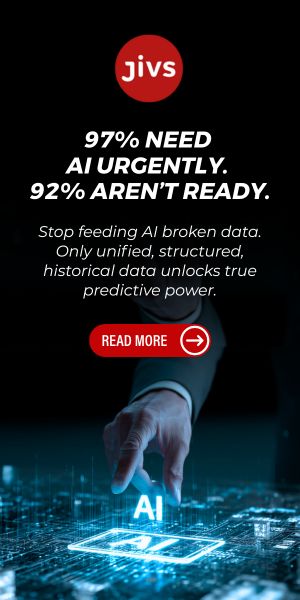The importance of data quality for a successful digital transformation – and how AI can help.
Do you know what kind of data exists in your business? Do you know where it is and what rules govern that data? Many organizations are unable to answer these questions; however, they are essential to every digital transformation.
Quality data is the foundation of any transformation project. If you’re getting ready to go through a significant transformation project, the time to look at your data is now. Leading with a Data First approach can help organizations leverage today’s advanced technologies, like generative AI (GenAI), to ensure successful data transformation and successful business outcomes now and in the future.
Data Work Needs to Begin Now
Resolving data issues can be a significant undertaking, but it’s important to understand just what you’re dealing with early on. It’s better to understand the scope of work early than to delay addressing your data’s health.
The way to accomplish this is through a Data First approach that starts with cleaning data immediately. In our years of experience working with customers on transformation projects, no one has ever told us they started cleaning their data too early.
Preparing for a transformation project by putting Data First involves not just cleaning but enriching your data and potentially collecting new data. This work must be done from the viewpoint of how business processes will work in your future systems. Solutions such as the Syniti Knowledge Platform (also known by the name SAP Advanced Data Migration & Management by Syniti) can play a strategic role throughout this process by helping organizations lay a proper data foundation before taking on AI and enabling your organization to reap many business benefits.
Start with Quality in Mind
Data quality is a measurement of how clean, accurate and complete your data is. Too often, the data cleansing process is skipped or planned too late in the project timeline. A common misconception is that if you could transfer over all the records and load them into the target system, that data must be OK. But often, this is when the problems start.
Load-ready data, in that it can be loaded into your new system, doesn’t mean your business processes can be successfully executed. It needs to be business-ready data. However, even with business-ready data, data quality can’t be considered a one-and-done process. You must implement data governance and data quality initiatives to ensure you’re maintaining business-ready data throughout the future. Without this approach, a company’s data will degrade over time.
Common Mistakes to Watch Out For
The initial kneejerk reaction when starting a data quality initiative for data transformation is to focus on preparing data in the source system, but this isn’t the most efficient approach. It is effective for some things, such as writing off open-aging accounts receivable. However, it goes beyond simply cleansing the system of outdated or duplicated information. It’s also about enriching the data you add, collecting data points, or creating new records. It’s a more extensive process than merely finding issues and fixing them.
Too often, when trying to move data into a new system, such as SAP S/4HANA, IT teams will try to hand an Excel sheet to the business users and tell them to fill it out and collect specific data. But this approach falls short as business processes and data are intertwined and dependent on each other. They have parent-child relationships and different hierarchies, which makes data cleansing and enrichment activities challenging to do accurately.
These difficult tasks can become manageable with the implementation of a solution like ours which facilitates cleaning, enriching and preparing the data before a company’s S/4HANA transformation. Such platforms manage the data dependencies and use target configuration to put guardrails on the enrichment and cleansing — which can assist users in collecting data in a secure, trackable and validated way.
The Role of AI
AI is a significant advancement in the business world, and for good reason. According to an IDC Report, companies that invest in AI realize an average return of $3.50 for every dollar spent. Additionally, GenAI alone could add the equivalent of $2.6 to $4.4 trillion annually to the global economy across the 63 use cases, according to McKinsey and Company.
GenAI can help support your overall data quality initiatives, particularly in cases where your business owners don’t know where the data quality problems are or where to start.
This is where synthetic data generation comes into play. In the AI world, when you hear the term “synthetic data,” that usually means you’re generating data for training purposes. However, you can repurpose the concept to generate synthetic data quality rules across all business processes. Syniti does this by generating a knowledge graph of the interconnection between all workstreams, business processes, and sub-business processes inside SAP S/4HANA.
From there, you can ask the AI to create data quality rules and reports for every one of these business processes. Once you have your data quality rules, you must post-process and confirm these rules. That leaves thousands of business rules, which can be deployed to a SAP ADMM tenant to immediately start monitoring data quality.
Business Benefits of Using AI
A significant benefit of using AI is the reduction of manual effort. One major contention point with transformation projects can be that they pull the data owners away from their daily activities to assist with the transformation – and it takes a lot of their time to do these projects. By using AI, you can reduce that effort. Since data work is ancillary for them, minimizing this burden is highly beneficial.
“Data is the foundation for AI, whether you’re using data to fine-tune and train your own model or to reduce the manual labor required to change unstructured data into structured data,” said Kevin M. Campbell, CEO at Syniti. “If your goal is to use AI to help solve a business problem, you’ll need to provide it with the proper business context – good data – so it can give you answers specific to that business context. Your competitors aren’t waiting for you to get it right, so there’s no time to waste in getting it wrong.”
Another benefit is cost savings. GenAI solutions can significantly reduce effort while increasing accuracy. Unlike traditional methods, GenAI does not require standardized inputs or preconfigured templates to execute data analysis and extraction, enabling faster implementation and reducing time to benefit. Additionally, it can enhance standard data assessments, uncovering additional business opportunities.
There’s a return on investment for finding data quality issues. Identifying just one of these issues could reveal opportunities to save millions of dollars.
The Data First Strategy
If you’re serious about creating and maintaining a competitive advantage with AI, you’ve got to start with the data. There’s no getting around it: digital transformation requires significant data work. Fortunately, AI’s capabilities bring an alternative to the old approach of numerous Excel sheets and hours upon hours of manual effort. There’s no longer an excuse to ignore data quality until it’s (often) too late. Set your organization up for success by following the guidelines noted above and adopting a data-first strategy.






